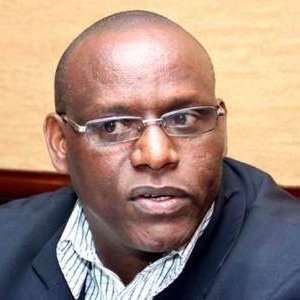Saba Saba solemnizes liberty and freedom. It is the triumph of the resolute resistance against tyranny, oppression and dehumanization of the people of Kenya. It marks the dismantling and shredding of personalized, iron-fisted rule. Saba Saba remains a critical step in ushering the roadmap to dismembering the pervasive post-colonial state with its instruments of crushing domination and cruelty. Saba Saba is the sober reminder to the people of Kenya of the atrocities and inequities that remain unaddressed.
British colonizers established the Kenya colony with socio-economic, legal and political institutional dispensations that underpinned the British model of agrarian production and state extraction. The colonizers grabbed land belonging to local communities. They segmented ethnic groups and restricted them in specific areas with limited freedom of movement and association. The Colonizers came up with laws like the Chief’s Authority Act, and a political and economic system that suppressed and controlled the local population. The Chief’s Authority Act granted powers to colonial chiefs to monitor and control the daily lives of people.
This state construction created dual socio-economic and political institutions that favoured British settlers to the detriment of local ethnic groups. This system practiced both reward and punishment. The Europeans and their local surrogates captured state institutions of power as a means through which they could not only access resources, but also wage punitive acts against local people who defied them. This settlers’ violence, politics of economic deprivation, forced labour systems and limitation of freedoms sowed seeds of resistance.
Local communities started to organize informally and discreetly. Community social interaction became arenas for political activism. However, due to limitation of different groups to interact freely, resistance took an ethnic model which reinforced ethnic differentiation. Colonizers were happy with this because it enabled polarization of communities, and the divide and rule system.
In their desire to regain lost freedoms and restore their community values, the local communities increased their resistance against the colonial state. The colonial regime responded militarily through the massive detention of locals and a villagisation programme that blocked off the villages. It also instituted minimum institutional and political reform programmes including well-organized schemes locking out those deemed ‘radical elements’ and establishing district-based representation in the Legislative Council. On the economic front, the Swynnerton programme was put into place for minimum agrarian reforms that allowed for land consolidation and the parcelling out of the same to loyalists. This was supposed to produce a pliable local elite with interests identical to those of the British colonizers; and to whom power could be safely handed over. Such a hand-over process would ensure that colonial interests were safeguarded in the post-independence era.
It is in this context that the Legislative Council representatives went to the Lancaster House Conference to negotiate for independence. While the Lancaster Conference was seeking to negotiate the future institutional and political dispensation, it is not lost that a sizeable voice of the Kenyan public was excluded. This exclusion ensured that those who sought the fundamental programme of social, economic and political change i.e. redesigning of the state, were excluded together with their mission.
For the British colonizers to retain the upper hand in negotiations, they ensured the representatives to Lancaster were given very little time to prepare and consult their people. This had the effect of the representatives and their agenda reflecting the ethnic interests of the delegations rather than national interests, whose independence they had ostensibly gone to negotiate. This way the colonial state was able to reproduce itself and its own position by promoting ethnic politics and propping up its own local loyalists. Due to this structure of negotiations, the colonial state structure remained near intact, except that the actors changed. The methods of marginalizing potential opponents to this system were inherited afresh using constitutional and extra-legal methods. Unlike in the colonial state, exclusion became ethnically defined by an elite.
This contextual analysis gives us vital components in understanding how the colonial state was organized and how it reproduced itself in the form of the post-colonial Kenya state. It also illustrates the ingredients of the resistance against the post-colonial state. Saba Saba is perhaps the single biggest resistance against this state. Its spirit originates from resistance against the colonial state and remains the driving force on the journey to completely dismantle the post-colonial state and its appendages.
Kenya got political independence under the quasi-federal system with a very progressive constitutional order. However, Jomo Kenyatta, Prime Minister turned autocratic President, and his colleagues in the Kenya African National Union (KANU), decided to accept this order but with the determination from the onset to destroy it. They were surrogates of the colonial state. They admired and desired the British colonizers’ lifestyle, wealth and power.
Kenyatta and his group did not only dismantle the quasi-federal system, but also adopted colonial legal instruments and governance practice. With this, the Kenyatta state was able to maintain its grip over Kenyans and fend off any strong opposition. By 1969, Kenyatta and his group completed the centralization and consolidation of power through the Constitution Amendment Act no. 16 of 1969.
This not only allowed him to control the civil service security apparatus, but also local government systems were diminished and replaced by re-strengthened provincial administration. This gave Kenyatta overreaching powers to establish control over the country’s political and economic systems. The centralization of power provided an environment germane to guarantee-ing the ethnically based elite the capture of formal institutions of power, as an apriori condition for facilitating access to the resources necessary for advancing the interests of those outside the formal realm of power.
This was to the detriment of the country’s different ethnic and racial groups. It would later influence future struggles in Kenya. Not only were state institutions ethnicized, they were also perverted. This had the chilling effects of arbitrariness and the brittleness of state politics in Kenya. Emergent laws and institutions were meant to service the interests of an exclusive elite group and reproduce and reinforce structures of its state control.
The death of Kenyatta facilitated Daniel Arap Moi’s take over as acting president. Once confirmed in his position, Moi sought to entrench his regime by stamping out opposition from among those who had stood in his way to succession. This meant the continuation of the logic of exclusion. Moi quickly sought to dismantle and reverse the Kenyatta elite capture and control of the state. His actions triggered the reconfiguration of existing financial, legal, political and administrative institutions. Moi created a further strengthened imperial presidency and transformed Kenya into a personalized-rule state.
The Constitutional Amendment Act No. 7 of 1982 was passed to legalize this rule and create a one-party state. Personalization was further enhanced by Constitutional Amendment Act No. 14 of 1986, which removed security of tenure for judges, the Attorney General, Controller and Auditor General. This, in effect, made holders of state offices beholden to the president. The next effect of the amendments was that of undermining not only institutions of accountability, but also democratic law and order. The entire legal system that emerged removed protection of the freedom of expression, association, representation and movement. State-engineered detention without trial, torture and violations were institutionalized. Ethnic politics and the corrupt state got entrenched.
Moi’s state criminalized dissent. The only credible threats against the regime started to emerge from the small group of lecturers and students of the university, some church leaders and part of the legal fraternity. This was a very limited but impactful nascent resistance. The state’s response was through mass crackdowns characterized by closures of universities, detention and jailing of lecturers and students.
The introduction of the ‘Mlolongo’ election and rigging of the 1988 general election in KANU escalated discontent and dissent towards the Moi regime, popularly known as the Nyayo regime from both within and outside government. The deteriorating economic situation fed into this build–up of political resistance. At this point there was no united front of resistance. The assassination of the then Minister for Foreign Affairs, Dr Robert Ouko in February, 1990 triggered spontaneous demonstrations and started to galvanize the masses against the regime. However, the emerging resistance lacked an organized leadership, ideology and structure.
Key fiery religious leaders had already started demanding for different political parties with consequential reprisals from the state and even the church itself. Politicians Kenneth Matiba and Charles Rubia were casualties of the rigged ‘Mlolongo’ KANU election. They came out strongly protesting and calling for not only the right to form alternative parties, but also went ahead to declare their intentions of holding a public rally of defiance at Kamukunji grounds. Both Matiba and Rubia were immediately detained. However, the trigger had been pulled and the bullet had left the nozzle.
There was nothing to stop Kenyans in their thousands from mobilizing and turning up for the rally on 7 July 1990 at Kamukunji grounds. This became the first historic Saba Saba.The Saba Saba spirit was taken up by the formation of the Forum for Restoration for Democracy-FORD. The latter was an attempt by young radical lawyers, politicians and activists from all walks of life to beat the legal requirement that demanded people have a permit to hold public rallies.
The Saba Saba spirit and momentum and the FORD’s agitation for reforms, and indeed its decision to defiantly hold another Kamukunji on 16 November 1991 forced the regime to concede to reforms. The state responded by repealing Section 2A of the Constitution through the Constitution of Kenya Amendment (2) Act No. 12 of 1991. Unfortunately, it was apparent that the only reforms the dictatorial Moi-KANU regime was willing to accept were those that did not threaten its hold on power. In practice, KANU adopted politics hostile to the politics of pluralism and multiparty democracy.
In the spirit of the Saba Saba resistance, and with restoration of pluralism and multiparty democracy, the second journey of Kenya’s state transformation was launched. The agitation’s core objective was the repeal of oppressive laws, the release of political prisoners, electoral reforms and a national convention to debate a new constitution. A platform known as the Coalition for National Convention (CNC) was formed largely by religious groups and nascent civil society organizations.
The newly formed political parties were more concerned with the 1992 General Election than with major reforms. These parties strongly believed in their ability to defeat the ruling party KANU. Like KANU, the opposition then did not see the constitution-making process as a rational, desirable and feasible political agenda to engage in. Indeed, far-reaching reforms were as much a threat to them as they were to the regime with respect to their capacity to hold onto and or capture state power.
CNC’s agitation for a new constitution were given a boost by the Catholic bishops and the Church of the Province of Kenya. CNC took advantage of this boost and through a group of civil society organizations commissioned drafting of a model constitution. The model constitution would form a basis upon which mobilization for a new constitution could be carried out. Consultations around the model constitution facilitated the formation of the Citizens Coalition for Constitutional Change-4Cs. 4Cs’ efforts to move the constitutional process forward remained hidden owing to the limited capacity to mobilize public support independently of political formations, and that there was not much public enthusiasm for a new constitution.
After the defeat by KANU in the 1992 election, the fragmented factions of political parties trooped back to rejoin the civil society organizations under 4Cs. Consequently, 4Cs organized for a more inclusive process by inviting a cross-section of interests to a consultative meeting on May, 1996. It is this session that constituted itself into the National Convention Preparatory Committee-NCPC. NCPC hoped to engender an inclusive process built around collective interests pertinent to Kenyan society.
NCPC’s task entailed the drawing up of the minimum constitutional legal and administrative reforms that would constitute the framework around which reform agitation would be built prior to the general election of 1997. NCPC successfully managed to hold the first national convention in April 1997. In attendance were all opposition leaders, except Raila Odinga and those of the Solidarity Alliance led by Kenneth Matiba. The NCCK and the Catholic Episcopal Conference opted to send observers. The basis of initial discussions was the 4C’s minimum constitutional reform agenda, which had been adopted by the NCPC at Limuru on 15 November 1996. It is this National Convention Assembly – NCA that transformed the NCPC into its Executive Arm, henceforth referred to as the National Convention Executive Council (NCEC).
The NCA, being the main decision-maker, mandated the NCEC to ensure promulgation of a new constitution in the country. Fundamental to this was the need to pressure the government through mass action if need be, to realize these objectives. NCEC was also expected to organize countrywide fora and consult with all interested sectors of the public for the same; and research and develop constitutional proposals relating to constitutional reform issues, and organize public rallies.
NCEC’s first rally was held on 3 May 1997 without seeking a permit. This was to affirm illegality of the Public Security Act. The defiance was expected to give a chance to Kenyans to see not only the type and nature of regime that ran the state, but also the issues under agitation. The regime’s reaction was violent against thousands who defiantly turned out at the Kamukunji grounds. NCEC achieved more than it had expected especially on successfully getting large numbers of people to come out without the presence of politicians and religious leaders who believed they had the moral authority to dissuade the public from turning up. This forced politicians both in and outside the Moi regime to seriously review their position on constitutional reform. The political Opposition quickly embraced the constitutional reform.
NCEC called for a second mass action rally following the state’s refusal to enter into dialogue on constitutional reform. This rally was held at Central Park Nairobi on 31May 1997, though the initial plan was to hold the rally on 1 June during Madaraka Day. This rally was held in the CBD as a way of forcing Nairobi’s business community into embracing constitutional reform which they had shunned until then. In the resultant rally, two people were shot dead by police.
In protest to this violence, and as a follow-up to the rally, NCEC called for the disruption of the reading of the national budget in Parliament should the government refuse to initiate constitutional reforms. It called on Kenyans to turn up in large numbers on the budget day 19June 1997, in a bid to prevent its reading and passing. NCEC contended that the reading of the budget was illegal to the extent that the state had over the years continued to read budgets without tabling its expenditure statements. NCEC equally contended that by refusing to institute reforms, the regime lost the legitimate right to table a budget. This had the consequence of taking the constitutional reform battle to Moi’s doorstep.
Two events happened simultaneously on this budget day. First, the Moi state for the first time privatized its violence. It hired private thugs to beat and prevent pro-reformist Kenyans from assembling within the Parliament precincts. A private vigilante group known as Jeshi la Mzee, was unleashed on the public with the tacit back up of the police. Secondly, on the floor of the House, Members of Parliament supporting constitutional reforms staged a protest forcing, for the first time in the history of Kenya, the budget speech to be switched off from being nationally broadcast. Moi, the despot, was present and so was directly confronted by the constitutional reforms. It set in motion major constitutional and legal reforms under the auspices of the Inter Parliamentary Parties Group (IPPG).
The obstinate character of the Moi-KANU regime refused to accept the cry for constitutional reform. So a fresh rally was called for by the NCEC to coincide with 7 July 1997, this time the theme was ‘No Reforms, No Elections’. But this time, the Saba Saba rallies were to be held countrywide, not just in Nairobi. In the ensuing demonstrations, more than 23 Kenyans lost their lives, 5 of them students. This is the second remarkable Saba Saba.
The IPPG-initiated constitutional review process, however, was State-Parliament controlled contrary to the agreed people-driven participatory process. NCEC rejected this process. In subsequent NCA conferences, a resolution was adopted that triggered a chain of processes including establishing a parallel people-driven constitutional process independent of state control under the banner of the Ufungamano Initiative; challenging the Constitutional Review Act, 1997 in Court resulting in the referendum; forming a group of democrats committed to discussing and debating Kenya’s political situation and suggesting a way forward. This led to the vanquishing of the Moi-KANU regime and the formation of the NARC government in 2002 and the starting of the march to the Grassroots. The consequences of these actions continue to reverberate in the country to date.
Finally, the spirit of Saba Saba has seen the country getting a progressive new Constitution in 2010, which is under imminent threat. This has ushered a new journey of state transformation based on the 2010 Constitution of Kenya; and its implementation with three major principles: Devolution of power and resources, Economic freedom and Human dignity and Alternative political leadership. Our country must remain eternally grateful to the gallant young people who have been the bedrock of these pluralism and constitutional reforms. In the spirit of Saba Saba, young people need to take on the baton and drive the next phase of dismantling the post-colonial Kenya state and building a democratic and just country for ALL its citizens.







